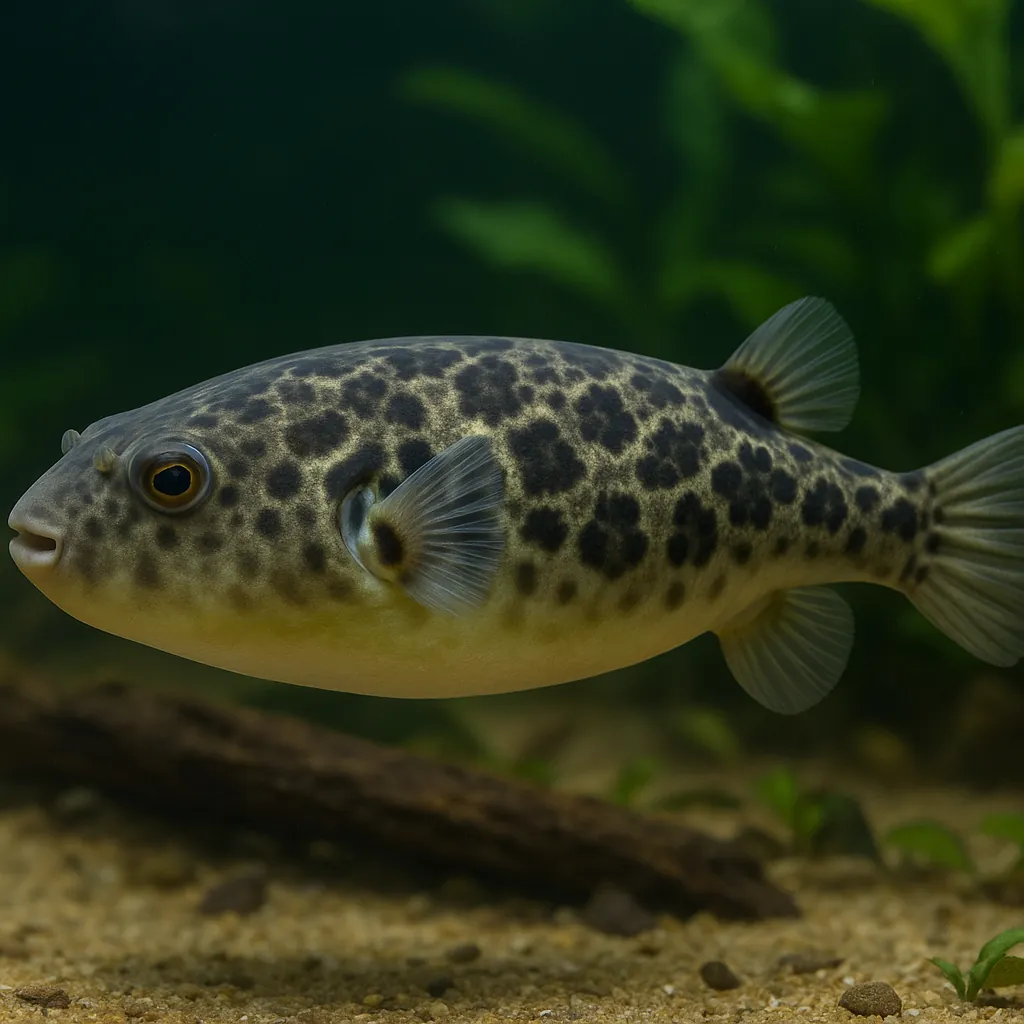
Giant puffer fish
Introduction
The Giant puffer fish, scientifically known as Tetraodon mbu, is a captivating species that has intrigued aquarists worldwide. Renowned for its impressive size and unique personality, this freshwater puffer is both a challenge and a delight for dedicated fishkeepers. However, due to its substantial size and specific care requirements, it's best suited for experienced hobbyists prepared to meet its needs.
What makes the Giant puffer fish appealing to aquarists?
Its interactive behavior and ability to recognize its owner make it a standout among freshwater species.
Is the Giant puffer fish suitable for beginners?
Due to its size and care demands, it's recommended for experienced aquarists.
Care and Environment
Proper care for the Giant puffer fish involves meticulous attention to its environment and diet. Here's a comprehensive guide:
What is the minimum tank size for a Giant puffer fish?
A minimum of 2,040 liters (approximately 540 gallons) is recommended to accommodate an adult specimen. Juveniles can start in smaller tanks but grow rapidly.
What water parameters are ideal for this species?
Maintain a temperature between 24°C and 26°C, a pH of 7.0 to 8.0, and hardness between 10-25°H.
How should the tank be set up?
Use a sandy substrate with smooth rocks and driftwood. Ensure ample open swimming space and provide hiding spots. Live plants can be included but may be nibbled on.
What filtration system is recommended?
A robust filtration system is essential to handle the bioload and maintain water quality. Regular water changes are also crucial.
What does the Giant puffer fish eat?
They are molluscivores, feeding on shellfish, worms, and other live or frozen foods. Regularly offering snails and unshelled shellfish helps maintain their teeth.
Are there any specific challenges in keeping this species?
They can be aggressive and are best kept alone. Their teeth grow continuously, requiring hard foods to prevent overgrowth.
Origin and Habitat
The Giant puffer fish is native to parts of Africa, including the Republic of Congo, Democratic Republic of Congo, Tanzania, Zambia, Burundi, and Cameroon. They inhabit rivers and lakes, notably Lake Tanganyika. These environments are characterized by varied substrates and abundant vegetation, providing ample hiding spots and hunting grounds.
Where is the Giant puffer fish naturally found?
In various African countries, including the Republic of Congo and Tanzania.
What type of habitats do they prefer?
They thrive in rivers and lakes with diverse substrates and vegetation.
Temperament and Compatibility
The Giant puffer fish is known for its aggressive and territorial nature, making it challenging to house with other fish. They are best kept alone to prevent conflicts. If considering tank mates, ensure the tank is exceptionally large, and choose fast-swimming species that can evade the puffer's attention. However, this is risky and not generally recommended.
Can Giant puffer fish be kept with other fish?
Due to their aggressive nature, it's best to keep them alone.
Are they social or solitary in nature?
They are solitary and do not shoal.
Interesting Facts
The Giant puffer fish possesses tetrodotoxin, a potent neurotoxin, making it one of the most poisonous vertebrates. Despite their aggressive tendencies, they can recognize and interact with their owners, displaying unique personalities. They can also change color based on mood or surroundings.
Is the Giant puffer fish poisonous?
Yes, they contain tetrodotoxin, a potent neurotoxin.
Do they recognize their owners?
Yes, they can interact and recognize their owners.
Sources
All information in this article has been gathered from the following reputable sources:
Overview
Recommended Tank Size 538.9 Gallons (suitable for a single adult) |
Minimum Group Size 1 |
Minimum Tank Volume 538.9 Gallons |
Maximum Adult Length 29.5 inches |
Average Adult Length 23.6 inches |
Shoaling (6+ required) No |
Preferred Water Type Freshwater |
Temperature Range (°C) 24–26 |
pH Range 7.0–8.0 |
Water Hardness (dGH) 10–25 |
Typical Lifespan (years) 10 years |